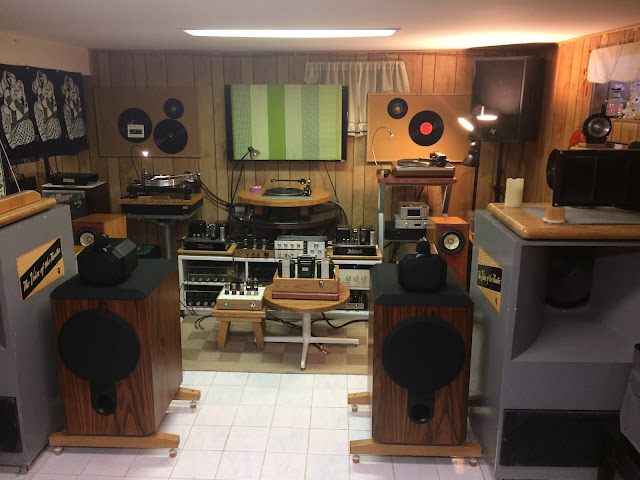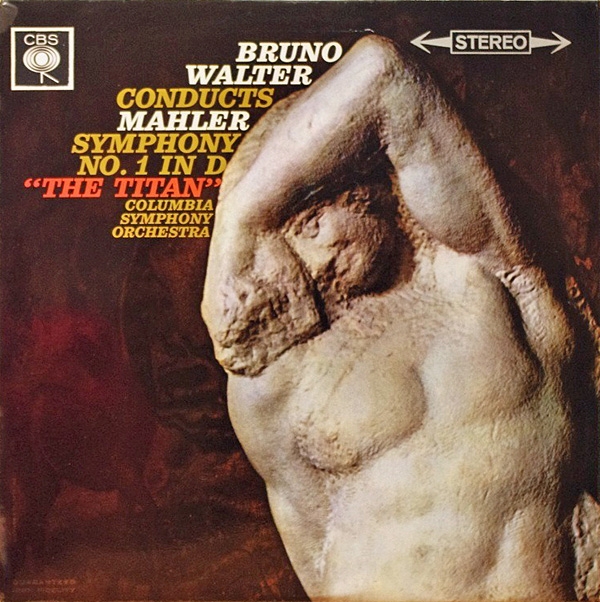Pic shows Andy's EMT 930 fitted with EMT TSD-15 Cartridge.
Subjectivism vs Objectivism (via Thorsten Loesch)
Home Visit: Chez Andy
While not this article's focal point of discussion, nothing better illustrates the great divide between Subjectivism and Objectivism than the Turntable, which is inferior to Digital in spec's, yet superior sounding.
The February 2019 issue of TAS was most interesting for
Steven Stone's Coverage of RMAF 2018. Not for what he covered (CAS) per se, which is peripheral to me, but for a passage that even when browsing quickly somehow caught my attention:
"...I had a long conversation during the show with Thorsten Loesch of Abbington Musical Research and IFI. He told me a fascinating story about confirmation bias. That’s when you are so sure of something that even strong evidence to the contrary will not persuade you to change your mind.
Thorsten put together a blind ABX testing where he told participants it was a comparison of two power cables. But when he went behind the curtains, ostensibly to change the power cable, what he actually did was switch the speaker cables on one channel, so the system was playing out of phase. Thorsten had three different types of audiophiles take his test: subjectivists, objectivists, and those who were neither. The subjectivists and neutral listeners heard the effects of the system being thrown out of phase. The objectivists heard no differences. It was a robust test with clearly correlated results.
And how noticeable is having one speaker’s channel out of phase with the other? Ten years ago, at CES I entered a room with an “All Digital System” that had all the DACs and electronics in the loudspeakers. I listened for about ten seconds, then I turned to the gentleman who was giving the presentation and told him, “One of your channels is out of phase with the other.” He told me that was impossible since all the connections were hard-wired. I thanked him and left. A day later he caught me in the hall and explained that indeed one channel had been mis-wired out of phase.
The fact that the objectivists in Thorsten’s test were the ones who were so set in their opinions that it blinded them to the aural facts in front of their ears is a delicious irony. Why? Because those audiophiles who embrace ABX testing with the most fervor are those who believe most strongly in effects of expectation bias, which is why sighted testing is, in their eyes, flawed. Thorsten’s test indicates a strong tendency for objectivists to listen with closed ears whether the test is blind or sighted, which isn’t very objective, is it?..."
Thorsten Loesch I have known (on the net only) him for quite a long time, long before he became an industry figure. I quite like the man. Opinionated, yes, but who isn't? Solidly grounded in engineering, yes, which cannot be said of most of his detractors. But I most admire him for the help he offered many people, and for his fondness for some vintage equipment despite being fully aware of numbers. He is someone who should really know both the subjective and objective sides of audio.
Internet Discussion Of course, his comments immediately seized attention in certain forums. In the long thread
here there were debates on what he said, including a little vitriol. Nonetheless, it is an interesting thread:
- I agree with what a commentator said, that the terms "Subjectivism" and "Objectivism" as used in audiophilia bear no resemblance to their more rigorously defined counterparts in Philosophy (or Psychology).
- When it comes to SET amps, Non-Oversampling DAC's (what I like), no reader of Stereophile will have missed the gulf between the Subjective Assessment of the admirers of such gear (Art Dudley, Herb Reichert and Ken Mecallef) and the Objective Measurements (usually terrible in numbers) of John Atkinson. What do I believe when it comes to these things? The subjective side of course.
As the Subjective/Objective arguments most often pertain to cables, I now give a take on my own experiences by telling you my latest moves.
Two Recent Examples of How I Changed the Sound by Changing a Cable After I installed the Grommes LJ5 in my system to my great satisfaction (just roll down to my last article or click
here), something nagged at me. Using the Grommes as Integrated's, I wanted to improve the sound delivered by my System III's Thorens TD-309/Denon DL-A100 (basically a DL-103) - it wasn't quite as good as the Thorens TD-124/SME3012/Denon DL-103 from System I fed into a SUT then directly into the Grommes. Grant you, although the two cartridges are virtually the same, there were differences in setup - the TD-309 goes through a solid state phonoamp (47 Labs
Shigaraki) and then through a buffer amp (Schiit
Saga); the TD-124, likely a better turntable to begin with, is used with an excellent SUT going into Grommes' tubed phono section. But I wanted to narrow the gap, even achieve near-parity.
What did I do? I just changed the phono cable of the TD-309. Out went the VdH
The Second, not a favorite, but a stopgap that worked well when last used with the Wavac MD-811, and in came the Gotham GAC-2, one of my two go-to cables (the other is Gotham DGS-1, which is already in use for connecting the output of the 47 Labs to the Schiit
Saga). The sound improved so much that the TD-309 setup no longer feels so different from the TD-124 setup, which is as it should given the similarity of the cartridges.
Another recent example would be the transformational change brought about by the Gotham GAC-1 Ultra Pro in Kevin's system (
here). So, what a difference a cable makes! This makes me take this opportunity to write the following:
 Cables, do they make a difference?
Cables, do they make a difference? The short answer is:
Absolutely, and sometimes even profound (as illustrated by the examples above). This prompts me to write soon a "HiFi Basics" article in which I shall cover some of my beliefs on cables. Watch this space.
Home Visit: chez Andy
Andy and I do not need a reason to get together. Generous to a fault, Andy always cooks a simple but tasty meal and serves fine wines. On this occasion, Kevin and I enjoyed the excellent steak (actually from Mark) and wine.
Before Kevin arrived, I listened to two interesting cartridges. First was VAS Steven's revamped Denon DL-103 with
ruby stylus! (on the Garrard 401/SME3012) which was used with a small Fidelity Research SUT (much like my beloved FRT3G, seen at the bottom of pic, right of middle). I also heard Andy's newly acquired EMT TSD-15 (current version; used on the EMT 930). The EMT is well known, as it has been widely and favorably reviewed, whereas the ruby Denon is an unusually tweaked oddity, but it is likely you will hear more about both in the future.
 Since our last visit, our indefatigable friend Kevin had (once again) revamped his audio setups - for the sole purpose of allowing his beloved B&W's more room to breathe.
Since our last visit, our indefatigable friend Kevin had (once again) revamped his audio setups - for the sole purpose of allowing his beloved B&W's more room to breathe.
 Kevin is a DIY person, making a large number of cables. He also recently DIY'ed a nice record weight using discarded industrial material. And, thanks for the wonderful lamb stew!
Kevin is a DIY person, making a large number of cables. He also recently DIY'ed a nice record weight using discarded industrial material. And, thanks for the wonderful lamb stew!






:format(jpeg):mode_rgb():quality(40)/discogs-images/R-3504832-1333182264.jpeg.jpg)











/https://public-media.si-cdn.com/filer/AS08%20Restoration%20631x300.jpg)




:format(jpeg):mode_rgb():quality(90)/discogs-images/R-3981515-1457039382-7087.jpeg.jpg)
















